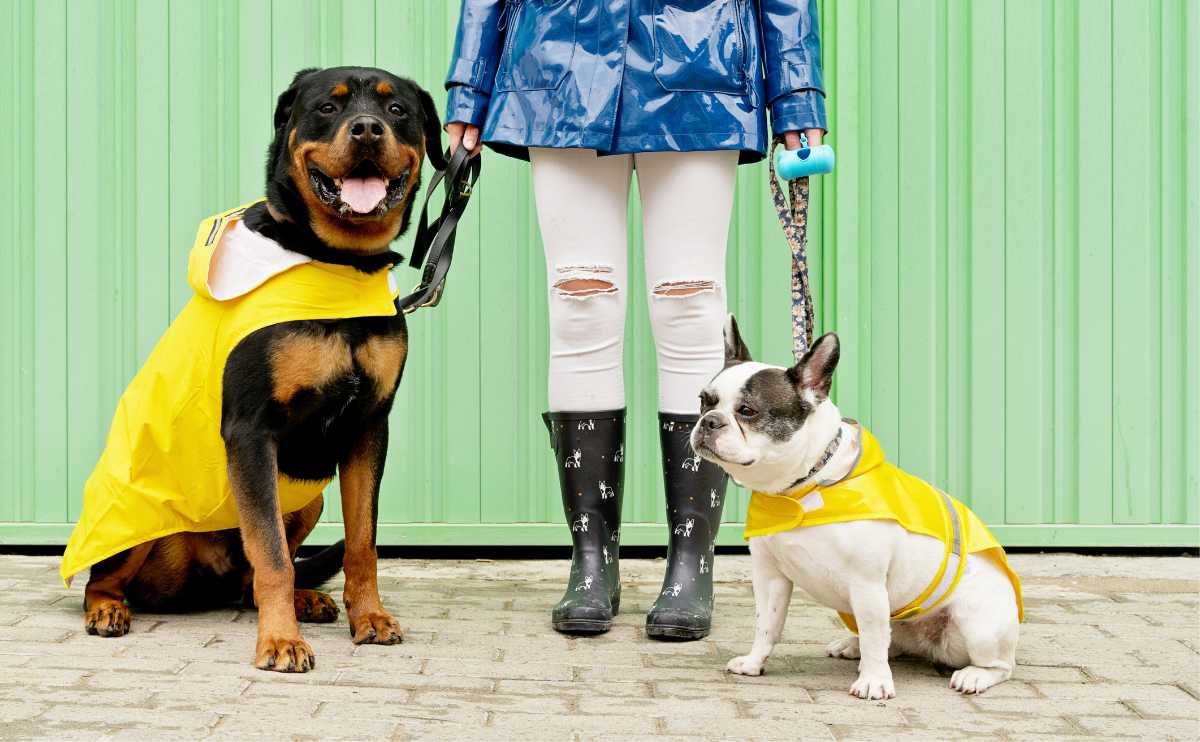When you purchase through links on our site, we may earn a commission. Here’s how it works.
Whether you have a pup with a penchant for persistent barking or you’d like to train your dog to stay in the yard, you may have considered a shock collar (aka electronic collar, e-collar, or remote training collar). As with any method of behavior modification, there are pros and cons. Ultimately, it’s up to you to choose the method that works best for you and your pup, so we’ve laid out the facts to help you decide.
At A Glance: Our Top Picks
| High-End | Mid-Range | Budget-Friendly | Virtual Fencing |
|---|---|---|---|
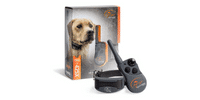 | 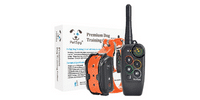 | 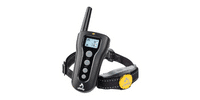 | 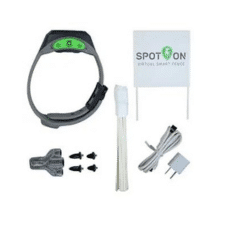 |
| SportDOG 425X | PetSpy M686 | PatPet 320 | SpotOn GPS Fence |
| View on Chewy | View on Chewy | Visit Website | |
| Read Review | Read Review |
We suggest NOT using these collars until your dog understands basic commands like sit and stay. That way, you know that they comprehend what you are asking them to do, and they can draw the association between any negative behavior and the “shock.”
- 5 Best Shock Collars For Dogs
- How Does A Shock Collar Work?
- 8 Things To Know Before Buying A Shock Collar
- Can You Use A Shock Collar On A Puppy?
- Shock Collar Alternatives
- Pros & Cons Of A Shock Collar For Dogs: Infographic
- E-Collar Training And Introduction Video
- Get Multiple Pet Insurance Quotes Instantly
- Dog Training Tips
5 Best Shock Collars For Dogs
We base our reviews on several factors, including the collar’s performance, multiple methods of correction (tone, vibration, and static shock), user reviews, pricing, customer support, and more.
Best High-End Shock Collar: SportDOG FieldTrainer 425X Review

View on Amazon | View on Chewy | View on Walmart
If you do decide that an e-collar is the right training device for your dog, we recommend the SportDOG FieldTrainer 425X for its 21 levels of static correction, tone and vibration-only options, and 500-yard range. Other fantastic features include a waterproof collar and a rechargeable battery that lasts for 50-70 hours.
It’s more expensive than some of the other electronic options out there, but it gives you more control and, therefore, a more positive training experience for your pup. It also allows you to train your dog with a much more mild tingle on 21 levels, rather than starting with an intense shock. This device is among our top picks for the best dog training collar.
Price
Best Mid-Range Shock Collar: PetSpy M686 Premium Training Collar Review

View on Amazon | View on Chewy | View on Walmart
If the SportDOG collar is out of your price range, the PetSpy M686 Premium Training Collar is another excellent option. It offers four training modes: vibration, sound, and momentary and continuous shock. And it gives you eight adjustable levels of vibration and shock, so you can fine-tune the correction level.
We also like that this collar’s contact points are made of conductive rubber to prevent skin irritation. It has a vast range (up to 1,100 yards), and the remote has a handy strap for easy portability. The adjustable collar fits most dogs (10-140 pounds), and the collar is waterproof (but not the remote). And the rechargeable battery life is up to 72 hours, although some customers say it doesn’t hold a charge nearly that long.
Price
Best Budget-Friendly Shock Collar: PatPet 320 Dog Training Collar Review

View PatPet on Amazon | View on Chewy | View on Walmart
The PatPet 320 is the best dog training collar we’ve seen for under $40. It gets rave customer reviews, performs well, and has most of the features you’ll need as long as you don’t require a long-range (its range is roughly 330 yards).
This budget-friendly training collar features a waterproof collar, safety silicone caps for the prongs, and three training modes: beep, vibration (1-8 levels), and static shock (1-16 levels). And it fits many dogs with an adjustable neck size from 7.8 inches to 27 inches (around 15 to 100 pounds).
Price
Best For Virtual Fencing: SpotOn GPS Fence Review
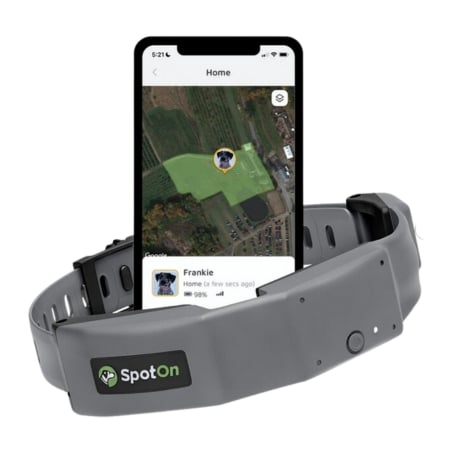
SpotOn GPS Fence is a fantastic option if you want a wireless fencing system, GPS tracking, and more, all contained within one collar. This system uses data from 25-30 satellites from GPS, GLONASS, Galileo, and Beidou to keep your pup within your set boundaries.
You start by setting up virtual fences by walking the boundary or via a map in the app. You can create up to 1,500 overlapping fences. Then you customize SpotOn’s collar to keep your dog in-bounds via automatic sound, vibrations, or static correction (30 levels). However, the use of static correction is optional. It includes excellent training materials, and you also get one-on-one training sessions with one of SpotOn’s certified dog trainers.
The fences work without a monthly subscription, but you must have SpotOn’s AT&T or Verizon cellular coverage service to get alerts that your pup has left the boundary and to be able to track in real-time your dog’s whereabouts on your smartphone.
Our Personal Experience With SpotOn GPS Fence

“We had the opportunity to try SpotOn’s collar with our Cavalier King Charles Spaniel in exchange for an honest review. The collar itself was easy to set up, attach the contact points, and adjust the size. After activating the collar and creating an account, you can walk with your dog on a leash to create your virtual fence in real-time. I was impressed at how detailed the fence line was and how accurate the invisible fence lines were.
When getting close to the ‘edge,’ it makes a loud beep. As you get closer to the boundary, there is a two-tone alert. And if you cross the boundary, the collar vibrates. There’s no subscription required for the fence feedback, but if you want GSP tracking that is an additional monthly fee. If you’re looking for a way to contain your dog without a need for wires, this training collar is worth the investment.”
– Sadie Cornelius, Cavalier King Charles Spaniel dog parent
Price
SpotOn offers a 90-day money-back guarantee and a one-year warranty.
Monthly Subscription
The optional subscription gives you access to SpotOn’s GPS tracking feature. A one- or two-year plan comes with a 90-day free trial.
- Month to Month: $9.95/month
- 1-Year: $7.95/month (save 20%)
- 2-Years: $5.95/month (save 40%)
Coupon
Use coupon code CANINE to get $100 off your SpotOn purchase via this link.
Runner-Up Virtual Fencing: Halo Collar 3 Review

The Halo Collar 3 is another all-in-one smart wireless dog fencing system, GPS activity tracker, and remote training collar. Halo uses GPS/GNSS, LTE, Bluetooth, and WiFi technologies to set boundaries, track your dog’s location, and send you escape alerts via the app.
Halo Collar works much the same way that SpotOn does, with some notable differences. First, it’s much less expensive. However, Halo Collar doesn’t allow you to create overlapping fences, nor does it have as many customizable correction levels as SpotOn. Like SpotOn, the use of static correction is optional.
It also comes with dog expert Cesar Millan’s 21-day training program to teach your dog how to adapt to the system. Although Halo has made several updates to its collar over the last couple of years, we’re still seeing some negative reviews about the system’s accuracy. But at nearly half the price, Halo could be a better option for you than SpotOn.
Our Personal Experience With Halo Collar 3
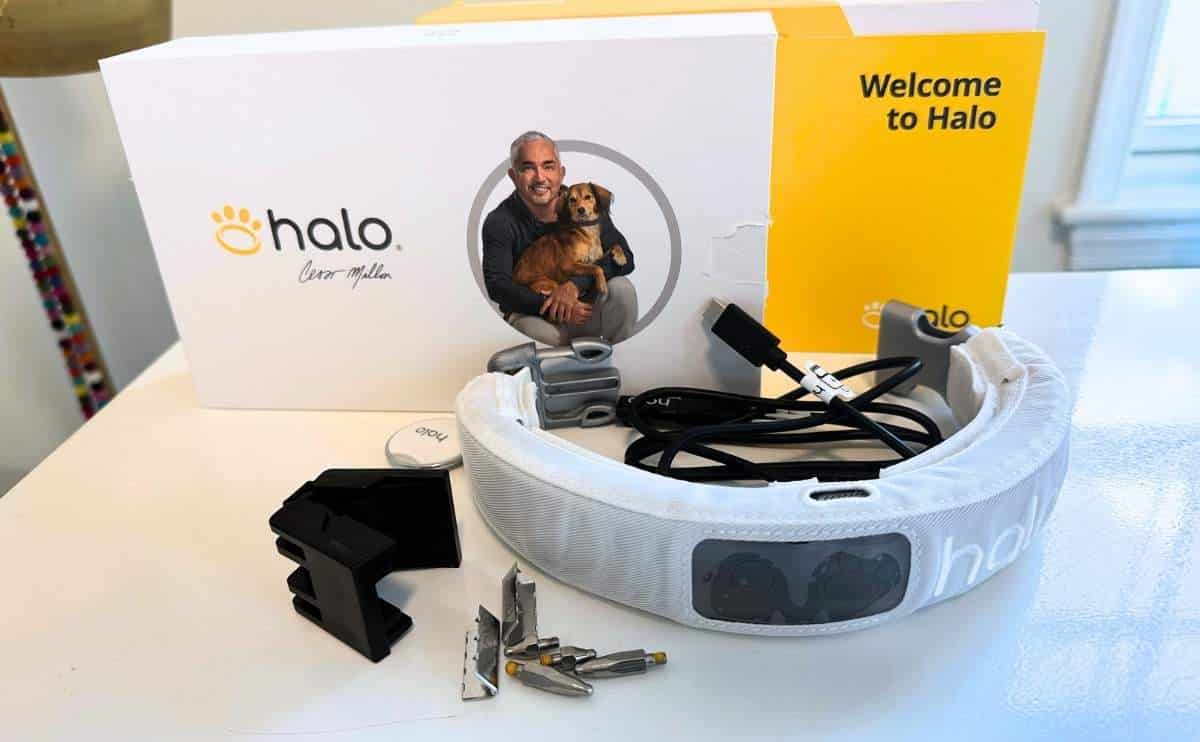
“The app walked me through a series of training videos which are super entertaining and informative. The quality is very cinematic, and the text helps reinforce the audio instructions. After learning about types of feedback (prevention and encouragement), I worked on beacon training. This gets your dog accustomed to feedback in a safe, indoor setting. You’ll manually give your dog feedback (sound or stimulation) and a reward to guide them away from the “no-go zone.” You’ll repeat these steps several times for 30 minutes and do at least 3-4 sessions before building up to outdoor boundaries. Eventually, when you turn the beacons on, the beacon will automatically give feedback when your pup gets within a certain range of the no-go zone. Georgie responded well to the feedback and am pleased with the GPS location tracking improvement from the Halo 2+ which we tested previously.”
– Sadie Cornelius, Cavalier King Charles Spaniel dog parent
Price
Monthly Subscription
A required monthly subscription gets you access to the GPS tracker, training tools, and activity monitoring. Each plan gives you different features and advanced tracking, feedback, and support.
- Bronze: $5.99/month
- Silver (recommended): $9.99/month (+ custom support, custom ranges, advanced tracing, instant feedback)
- Gold: $29.99/month (+ premium training lessons each month, live sessions with trainers)
Coupon Code
Use this link to get $25 off your Halo Collar purchase and unlock a special discount.
How Does A Shock Collar Work?
Shock collars are a type of aversive training initially used in the 1960s to train hunting dogs. These days, people often use shock collars to curb a variety of stubborn and unwanted behaviors in family dogs, from excessive barking to food aggression. They’re also used to train pups to stay safely within a property line or to stick close by while off-leash.
A dog training shock collar should not be intended as a punishment but more as a deterrent to negative or unsafe behavior. The theory is that your dog will associate the unwanted behavior with a slightly uncomfortable jolt and stop doing it until he no longer requires the reminder.
The shock administered by an approved shock collar is safe, so while it’s certainly enough to get your dog’s attention and deter certain behaviors, it won’t do any physical harm.
Is Shock Stimulation The Only Corrective Mode With These Collars?

With most shock collars, there are several types of enforcement and levels of stimulation, so you can set the level to reprimand the unwanted behavior accordingly. For example, many shock collars give you the option of setting your enforcement to tone (beep) or vibration as a starting point or as a warning signal. And then you can decide to move it a step further to a static shock.
The non-shock modes also allow you to give a verbal command (“No!” or “Down!”) with the warning beep or vibration to further disrupt the unwanted behavior. Just keep in mind that you should approach shock collar training slowly, starting with the lowest level and type of enforcement and working your way up if needed.
With boundary training (often marketed as an invisible or wireless fence), the shock collar is triggered by GPS location-tracking or wires placed underground along the property line so the dog learns exactly how far it can go before reaching the boundary.
Once set to “shock” mode, there are usually varying levels of intensity delivered by a two-pronged device attached to a dog collar. If you’re using a shock collar as a barking deterrent, the collar responds to the vibration of your dog’s vocal cords. If you’re using the collar to deter behavioral issues like food aggression, jumping, or leash aggression, a remote control allows you to administer the shock or other corrective mode in conjunction with the unwanted behavior.
Keep in mind, that using a shock collar doesn’t make you a bad pet parent, and it doesn’t mean you’re torturing your dog, especially when used on the lower non-shock levels. It’s unlikely that an electronic training collar would destroy your relationship with your dog. Shared training sessions could improve your bond with one another.
8 Things To Know Before Buying A Shock Collar
Here are four pros and four cons that we think everyone should consider before using or purchasing a shock collar for a dog. Please be sure to read these carefully, and feel free to ask us any questions you have about the pros and cons of using a shock collar.
Pros Of Shock Collars For Dog
1. Adjustable Intensity
Most modern shock collars give you the flexibility of a warning beep or vibration mode and adjustable shock levels. With most of these collars, the use of static correction is optional. This can be comforting to people who are on the fence about using a shock collar. Other collars, such as spray collars, which administer a harmless but foul-smelling blast up a dog’s snout, are usually not adjustable.
2. Fast Results
Some pet owners report that it only took a few shocks to correct unwanted behavior in their dog, and after that, the beep or vibration was warning enough (for us, we never even needed the shock at all). Shock collars can also be very effective at keeping your dog on your property, which will help keep them safe while giving them freedom. Of course, more stubborn dogs may take longer to train.
3. You Don’t Need To Be Present
When used to control chronic barking, shock collars work even while you’re away from home or inside the house. This can be especially helpful if you’ve had neighbors complain about your dog’s loud protests. The same goes for shock collars as boundary control, although they do require some hands-on training.
Personally, I would not leave my dog unattended with a shock collar as I would be scared of overcorrecting while I was not there to observe and adjust to the situation, but this is your choice. Also, we don’t recommend leaving your dog unattended outside for extended periods of time, with or without a shock collar.
4. Affordable
A shock collar can be a cheaper alternative to a professional dog trainer or fence. Shock collars range in price from $30 to $250+, depending on features such as remote control, adjustable warning/shock levels, a range of distances (usually 30 to 400 yards), and the number of collars included.
Cons Of Shock Collars For Dogs
1. The Shock
Most pet owners can’t fathom causing pain to their pets. But even with the ability to control the intensity of the correction, you are still using aversive behavior modification. Many dog trainers choose positive reinforcement (reward) as a means of behavior modification over negative feedback.
2. The Fear
Fear in dogs can be dangerous, so you never want to train a dog with fear. With shock training, some dogs may learn to fear people, objects, or situations they associate with the collar. One pet owner we know installed a wireless fence, and then their dog refused to go outside after training with it. Their dog even started urinating in the house.
3. Over-Correction
Without you there to control when a shock is administered, automatic bark collars and electric fences may deliver shocks unintentionally or too often. This unnecessary shock could confuse your dog by “correcting” a problem that was not even there.
4. No Positive Reward
On their own, shock collars don’t reinforce good behavior with a positive reward such as affection, verbal approval (“Good boy!”), or a tasty treat. So while a shock collar may effectively deter negative behaviors like jumping on visitors or running after the mail carrier, it doesn’t reward positive behavior such as sitting patiently or obeying a command to “Stay!”. As with any training, you should always reinforce positive behavior with a reward of affection, playtime, or a small treat.
Can You Use A Shock Collar On A Puppy?
You may be tempted to turn to an e-collar right away to curb your puppy’s negative behaviors. But as we said above, it’s wise to hold off using a shock collar until your pup has at least nailed down basic obedience commands. Puppies have short attention spans and need time to mature enough to understand instructions.
According to PetSpy and some other e-collar experts, dogs less than six months should not use e-collars. Why? Puppies under six months may not have the ability to receive training or to receive the various types of stimulation from an e-collar.
Shock Collar Alternatives
If you’re against using static shock on your dog, you have several options that can be very effective. Of course, one alternative is to only use the tone or vibration setting available on many shock collars. Here are some other alternatives to consider.
Positive Reinforcement Training
A small study found that dogs respond better to positive reinforcement training rather than aversive training. Positive reinforcement training is reward-based and involves giving your dog praise, a toy, or a treat for exhibiting good behavior. Many professional dog trainers, including the best online dog training courses, use this training method.
Use A Clicker Or Whistle
Instead of using a training collar, you can use a clicker or whistle to promote good behavior. Some professional dog trainers use these methods to enhance positive reinforcement training. Add a verbal cue after using the whistle or clicker to train your pup, and then, once he gets the hang of it, you may not need to use the clicker or whistle anymore, just your verbal cues.
Citronella Collars
Some experts believe that citronella collars, like the WWVVPET’s Citronella Spray Dog Training Collar with Remote Control, are more effective at solving unwanted barking than using an electric shock. Technically, it’s still an aversive training method because the idea is that dogs are discomforted by the citronella spray and will learn to stop barking to avoid being sprayed in the face. But many consider it a more humane method than shock training.
Pros & Cons Of A Shock Collar For Dogs: Infographic
Here is a summary of the pros and cons of shock collars for dogs.

E-Collar Training And Introduction Video
Learn about training your dog using an e-collar with these helpful tips.
Get Multiple Pet Insurance Quotes Instantly
Dog Training Tips
Training your dog takes time and patience. See our dog training advice to learn how to turn a disobedient dog into an obedient one. To train your dog yourself, you can sign up for an online dog training course. Or see our tips on finding the right dog trainer if you’d rather have a professional work with you and your dog.
No matter what training method or tools you decide to use, the intended purpose is to help your dog, whether it’s to stop him from barking unnecessarily or to keep him from harm’s way. This applies when using a shock collar or any training collar. Are you unsure of what size collar to get? Check out our handy guide to find the average neck size based on dog breed.
Tagged With: Collars, Comparison, Training
